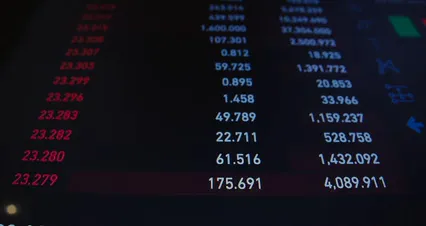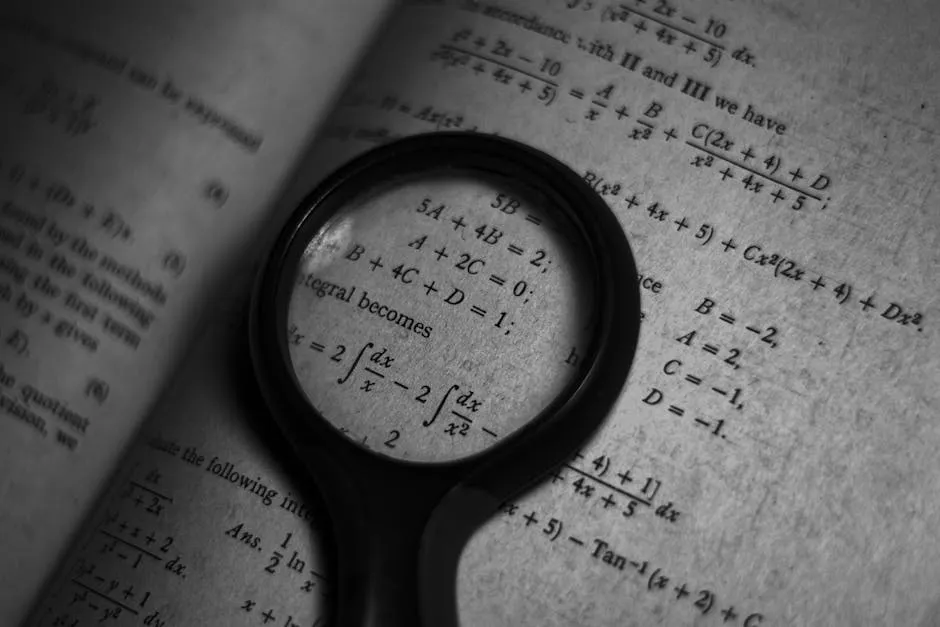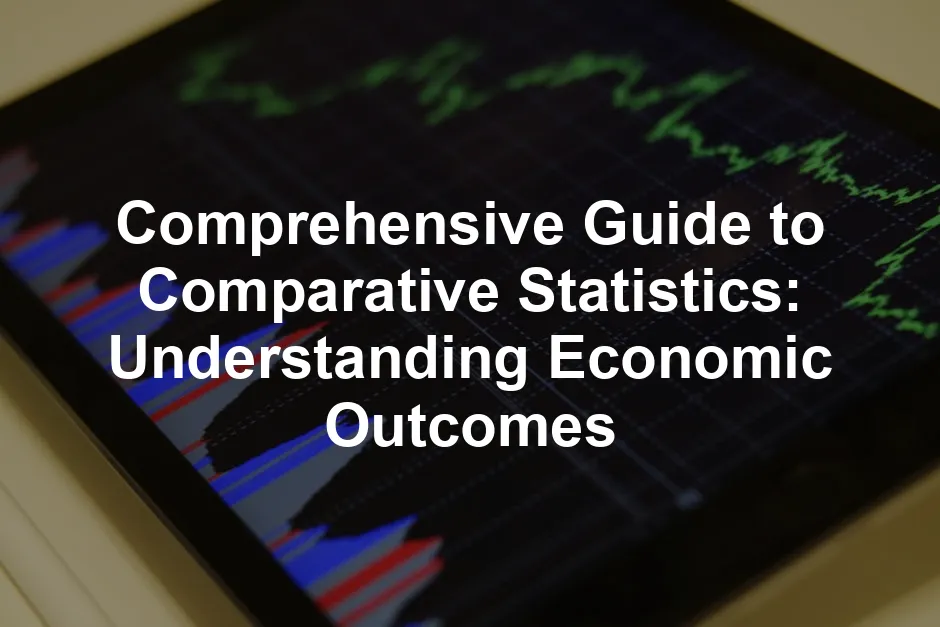Introduction
Comparative statistics is a vital tool in economics for analyzing how changes in certain external factors affect economic outcomes. By comparing different equilibrium states before and after a change in an exogenous variable, economists can gain insights into market dynamics. Think of it as a before-and-after snapshot of economic conditions—where the “after” is influenced by a tweak in variables like taxes, government spending, or even weather events. Understanding comparative statistics is crucial for a variety of professionals. Economists rely on this analysis to predict market behavior. Policymakers use it to evaluate the potential impact of new regulations or fiscal policies. Business professionals leverage these insights for strategic planning and risk assessment. In short, comparative statistics is the lens through which many economic phenomena are examined, making it indispensable in decision-making processes. In this article, we will cover the definition and scope of comparative statistics, its historical roots, and its applications in economics. We will also explore examples, methodologies, limitations, and the practical implications of this analytical approach. Buckle up, because we’re about to embark on an enlightening journey through the world of comparative statistics!
If you’re curious about a classic in economic literature, check out “Principles of Economics” by Alfred Marshall. This foundational text delves into the mechanics of supply and demand, giving you a solid grounding in economic theory.
1. What is Comparative Statistics?
At its core, comparative statistics is the analysis of different equilibrium positions that arise from changes in exogenous variables. Unlike dynamic analysis, which looks at how variables change over time, comparative statistics focuses on comparing two static states—the “before” and the “after.” This method answers the pressing question: How does a change in an external factor influence economic outcomes? The origins of comparative statistics can be traced back to Alfred Marshall, a foundational figure in economic theory. His work in the late 19th century laid the groundwork for modern economic analysis, particularly regarding supply and demand. Marshall’s insights helped economists understand how shifts in these fundamental forces can lead to changes in market equilibrium. Comparative statistics finds its applications in various economic scenarios. For instance, it plays a crucial role in market equilibrium analysis, where economists assess how shifts in consumer demand or production costs impact prices and quantities. It’s also instrumental in policy evaluation, allowing analysts to forecast the effects of tax changes or government interventions on overall economic welfare. Moreover, financial modeling benefits greatly from comparative statistics. By simulating different scenarios—like varying interest rates or changing input costs—analysts can gauge potential risks and returns on investments. This analytical method is not just theoretical; it has real-world implications for businesses and policymakers alike. Speaking of insightful economic reads, you might enjoy “The Wealth of Nations” by Adam Smith, which explores the intricacies of market dynamics and the role of self-interest in economic systems. In summary, comparative statistics serves as a cornerstone of economic analysis. It provides a structured approach to understanding the impact of external changes on economic outcomes, paving the way for informed decision-making.
Understanding the role of comparative statistics is essential for making informed economic decisions. comparative statistics
2. Theoretical Framework of Comparative Statistics
2.1 Fundamental Principles
Equilibrium Analysis: In economics, equilibrium is the sweet spot where supply meets demand. When there’s a shift—like a rise in consumer income or a sudden decrease in production costs—things change. Imagine a seesaw; if one side goes up, the other side must respond. As demand increases, perhaps due to a new trend or a growing population, the demand curve shifts right. This leads to higher prices and quantities in the market. Conversely, when supply increases, say from technological advancements, the supply curve shifts right, resulting in lower prices and more products available. The balance is delicate. If demand skyrockets without a corresponding increase in supply, prices will surge, leading to potential market inefficiencies. On the flip side, if supply outpaces demand significantly, prices will plummet, risking losses for producers. Thus, equilibrium analysis helps us understand the ripple effects of various market changes, making it essential for economists and business leaders alike. Ceteris Paribus Assumption: Ah, the ceteris paribus assumption—Latin for “all else being equal.” It’s like saying, “hold my drink while I analyze this!” When economists study the effect of one variable, they often hold other variables constant to isolate the impact. Imagine you’re trying to figure out how a price change affects demand. If you don’t account for changes in consumer preferences, income levels, or the prices of substitute goods, your analysis might go off the rails. By employing ceteris paribus, economists can focus on the direct relationship between the variables they’re interested in, reducing the noise from other influences. However, while this approach simplifies analysis, it can gloss over the complex realities of market dynamics. Real-world scenarios rarely allow for such neat conditions, making the ceteris paribus assumption both a helpful tool and a potential pitfall. For those who want to dive deeper into behavioral economics, check out “Freakonomics: A Rogue Economist Explores the Hidden Side of Everything” by Steven D. Levitt and Stephen J. Dubner. This book unravels the unexpected connections between economics and everyday life.
2.2 Mathematical Formulation
Key Equations: At the heart of comparative statistics lies a collection of vital equations. These formulas help economists track how changes in exogenous variables influence equilibrium states. One cornerstone is the implicit function theorem, which helps us derive relationships between variables. Consider this equation: \[ f(x, a) = 0 \] Here, \(x\) represents an endogenous variable, and \(a\) is the exogenous parameter. To find out how a small change in \(a\) affects \(x\), we employ the comparative static derivative: \[ \frac{dx}{da} = -B^{-1}C \] This equation tells us how \(x\) changes in response to a shift in \(a\), where \(B\) and \(C\) are the partial derivatives of the function concerning \(x\) and \(a\), respectively. It’s like having a mathematical crystal ball, allowing us to predict outcomes based on slight adjustments. Examples of Derivation: Let’s illustrate with a couple of examples. 1. **Example One**: Imagine a market for oranges. The demand function is represented as: \[ Q^d(P) = a + bP \] While the supply function is: \[ Q^s(P) = c + gP \] Setting \(Q^d = Q^s\) gives us the equilibrium price: \[ P^{eqb} = \frac{a – c}{g – b} \] If we suddenly increase \(a\) (say, due to a health craze promoting oranges), the new equilibrium price will change, showing how demand impacts prices. 2. **Example Two**: Now, let’s consider a national income model where equilibrium income \(Y\) is influenced by investment \(I_0\) and government spending \(G_0\). The equation might look like: \[ Y = C + I_0 + G_0 \] If \(I_0\) increases, we can derive the change in income by differentiating the equation with respect to \(I_0\): \[ \frac{dY}{dI_0} = \text{Marginal Propensity to Consume} + 1 \] This equation helps us see how shifts in investment lead to changes in overall economic activity. In summary, the mathematical framework of comparative statistics provides the tools to analyze and quantify economic outcomes in response to variable changes. It’s the backbone of economic analysis, allowing economists to transform theoretical insights into practical applications.
3. Limitations of Comparative Statistics
3.1 Static Nature
Comparative statistics is inherently static. It looks at two snapshots of an economic system: the “before” and the “after.” This analysis shines a light on how an external change influences equilibrium. However, it stumbles when it comes to capturing the dynamic dance of time. Economic variables do not simply switch from one state to another; they undergo adjustments, oscillating and interacting with various factors. Imagine a rubber band. When you pull it, it stretches, but it doesn’t snap back instantly. Instead, it takes time to return to its resting state. Similarly, comparative statistics doesn’t account for the lagging effects of changes or the gradual adjustments that occur in the economy. It’s like trying to judge a race by only looking at the start and finish lines, missing all the exciting action in between.
3.2 Examples of Misleading Conclusions
This static nature can lead to misleading conclusions. For instance, say the government introduces a new tax. Comparative statistics might show a decrease in consumer spending immediately following the tax hike. However, it overlooks the longer-term adjustment process. Consumers might initially cut back on spending, but over time, they could adapt their budgets, leading to a different spending pattern altogether. Consider another example: a sudden spike in unemployment due to a factory closure. A comparative statistical analysis might suggest that the local economy is doomed. Yet, in reality, the community could rebound as new businesses open, shifting the local economic landscape. In both cases, relying solely on comparative statistics can distort our understanding of economic realities. It fails to capture the rich, evolving narratives of how economies respond to external shocks over time. This limitation highlights why economists should tread carefully when interpreting comparative statistics without considering the dynamic adjustments that unfold in the real world.
6. Practical Implications of Comparative Statistics
6.1 Policy Formulation
Policymakers often rely on comparative statistics to shape effective economic decisions. When considering changes in taxation, government spending, or regulations, they use this analytical tool to predict potential outcomes. Imagine a scenario where a government debates increasing taxes on sugary drinks to curb consumption. By applying comparative statistics, they can analyze how this change would affect market prices and overall consumer behavior. For instance, if the tax leads to higher prices, comparative statistics can help policymakers anticipate a decline in demand. They could weigh this against the potential health benefits of reduced sugar consumption. Ultimately, such insights enable policymakers to make informed decisions, aligning economic strategies with desired societal outcomes. If you’re keen on understanding the legal implications of economics, consider “Economic Analysis of Law” by Richard A. Posner. This book delves into how economics can inform legal frameworks and enhance policy decisions.
6.2 Investment Decisions
Businesses can harness comparative statistics for risk assessment and strategy development. When evaluating a new project or investment opportunity, companies analyze how shifts in market conditions—like changes in consumer preferences or production costs—could impact their bottom line. Consider a tech firm looking to launch a new gadget. By using comparative statistics, they can simulate various scenarios based on different pricing strategies, production levels, and competitor actions. This analysis helps them identify the most advantageous course of action, minimizing risks and maximizing potential returns. Thus, comparative statistics become a crucial tool for businesses seeking to navigate complex economic landscapes. For those interested in a comprehensive overview of economic principles, “The General Theory of Employment, Interest, and Money” by John Maynard Keynes is a must-read.
6.3 Market Predictions
Analysts use comparative statistics to forecast market trends and outcomes effectively. By comparing different equilibrium states, they can gauge how external changes—such as shifts in consumer income or advancements in technology—will impact market dynamics. For instance, if analysts observe an increase in disposable income, they might predict a surge in luxury goods sales. Using comparative statistics, they can illustrate potential price adjustments and changes in quantity demanded. These predictions empower businesses and investors to prepare for market shifts, making informed decisions that align with anticipated trends. If you’re intrigued by the intersection of economics and finance, take a look at “Capital in the Twenty-First Century” by Thomas Piketty, which explores wealth distribution and economic inequality. In conclusion, the practical implications of comparative statistics extend across various sectors. Policymakers utilize it for informed decision-making, businesses leverage it for strategic planning, and analysts apply it for market predictions. This analytical tool is essential for navigating the complexities of economic environments, ultimately leading to more effective outcomes in policy and business strategies.
FAQs
What is the primary purpose of comparative statistics in economics?
Comparative statistics is designed to analyze how changes in variables affect economic models. It helps economists assess the impacts of external factors, such as shifts in demand or supply, on market outcomes.
How does comparative statistics differ from dynamic analysis?
Comparative statistics focuses on comparing two static states—before and after a change—while dynamic analysis examines how variables evolve over time. This distinction highlights the different approaches to understanding economic phenomena.
What are some common applications of comparative statistics?
Common applications include policy evaluation, market analysis, and financial modeling. For instance, it is used to predict the effects of tax changes on consumer spending or to assess the impact of supply chain disruptions on production costs.
What are the limitations of using comparative statistics?
The main limitations include an oversimplified view of economic realities, reliance on the ceteris paribus assumption, and the static nature of the analysis. These factors can lead to misleading conclusions if not considered carefully.
Can comparative statistics be applied in real-world scenarios?
Absolutely! Comparative statistics is widely used in business and policy-making. It helps organizations assess risks, evaluate strategies, and make informed decisions based on anticipated changes in economic conditions.
If you’re a fan of documentaries that delve into economic themes, you might find “The Big Short” DVD enlightening. It offers a gripping narrative of the financial crisis. Check it out here.
Please let us know what you think about our content by leaving a comment down below!
Thank you for reading till here 🙂
All images from Pexels




